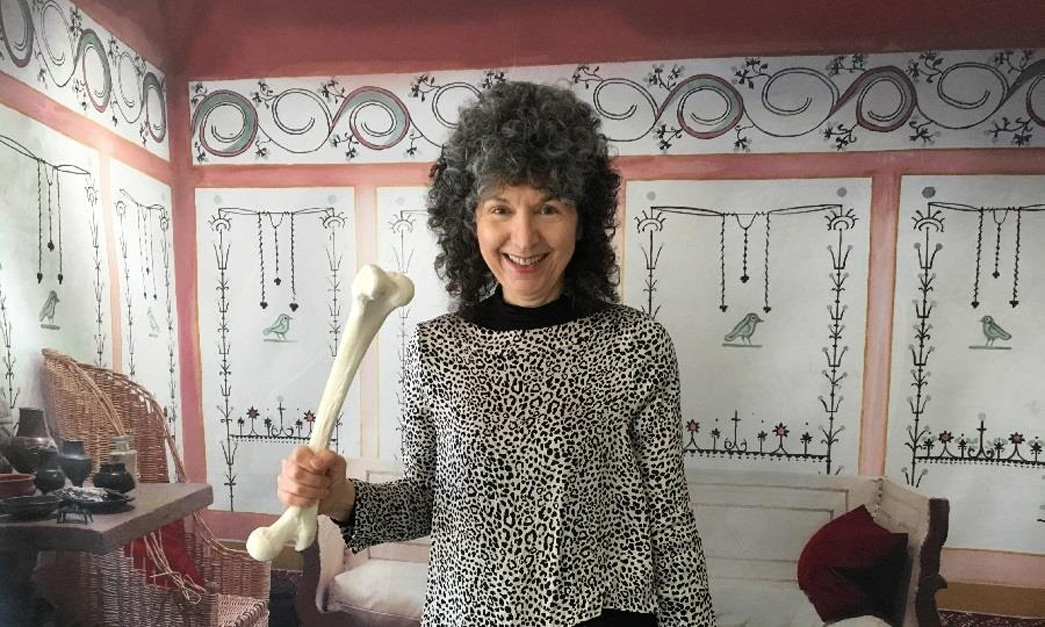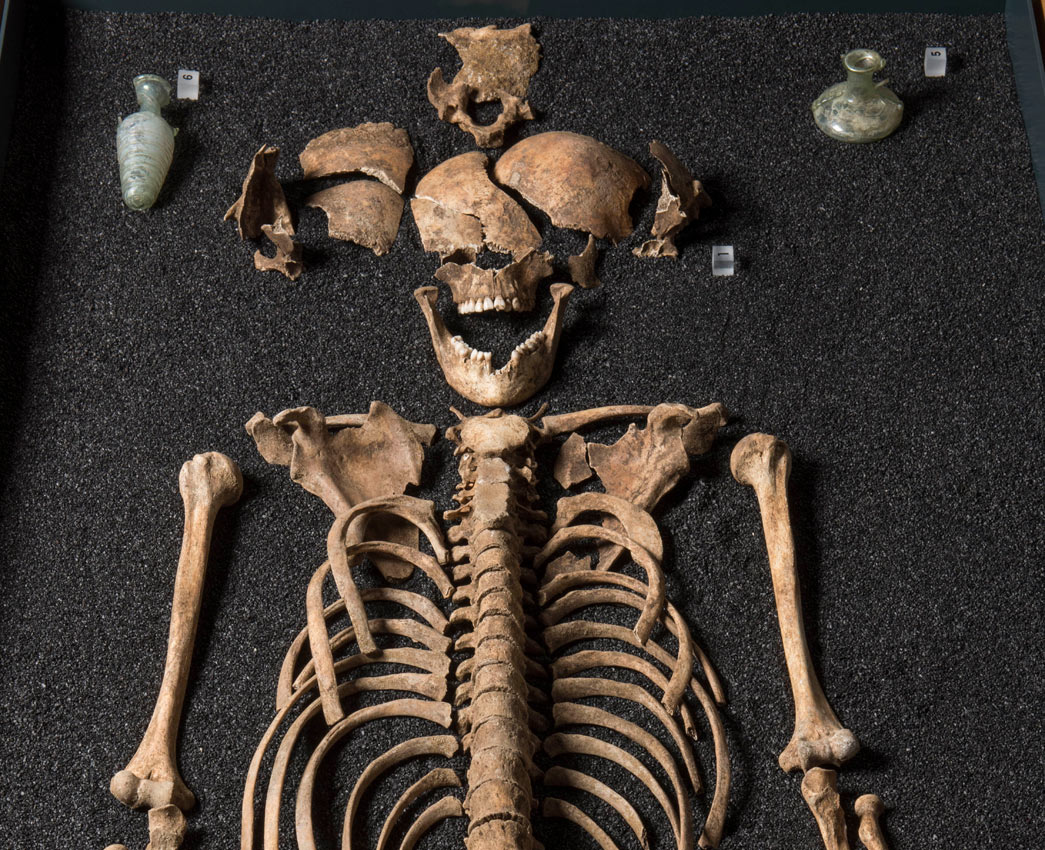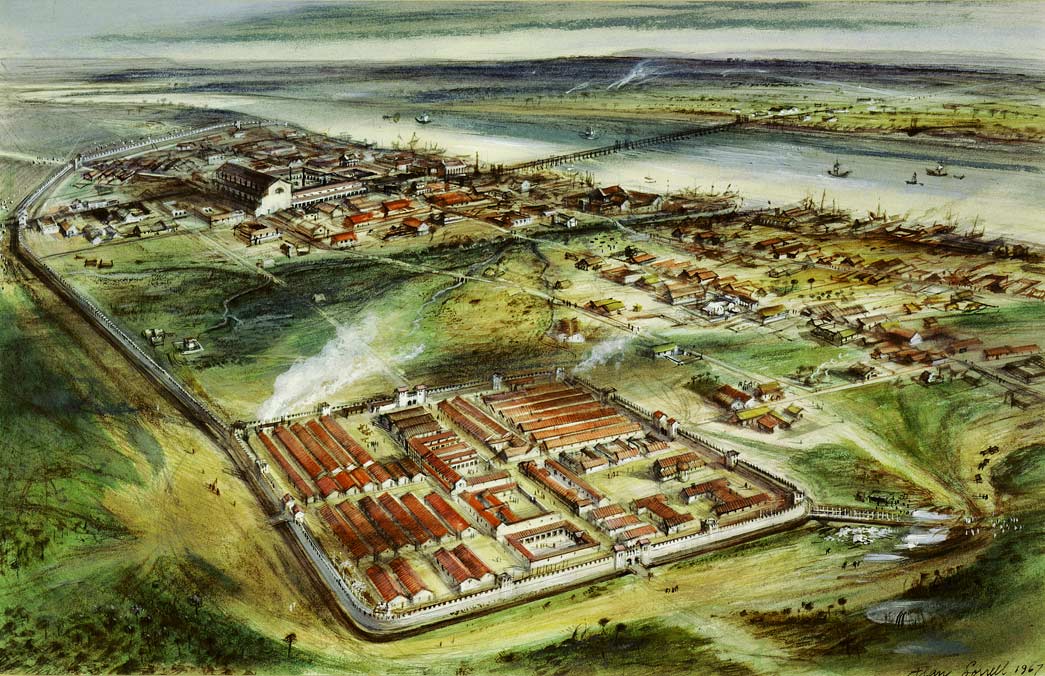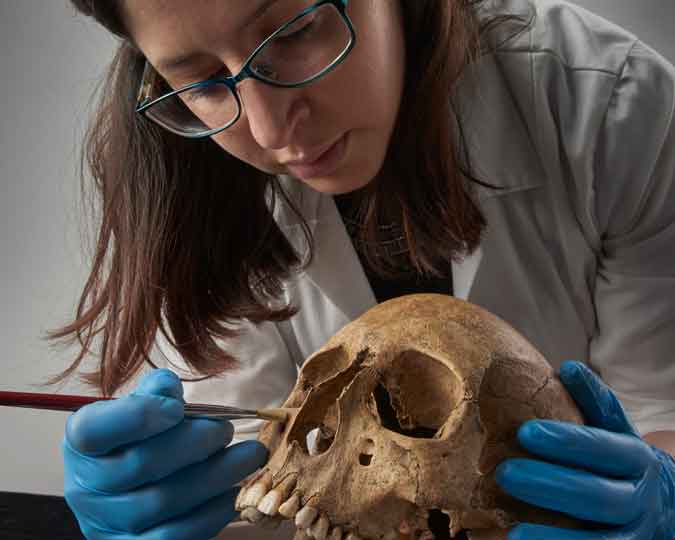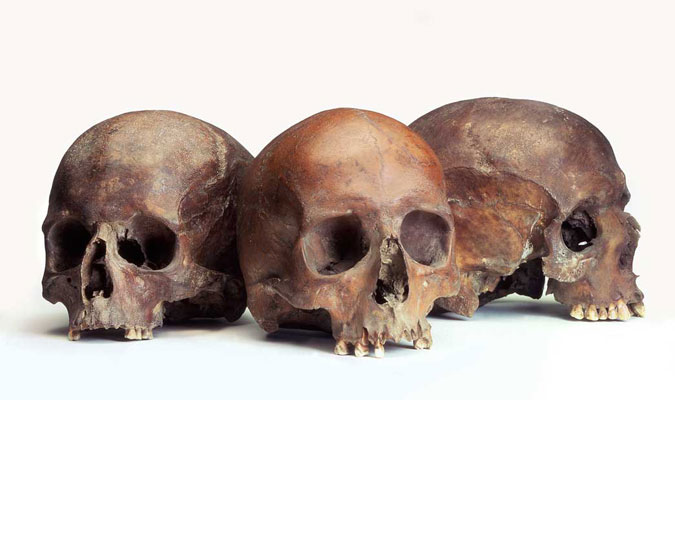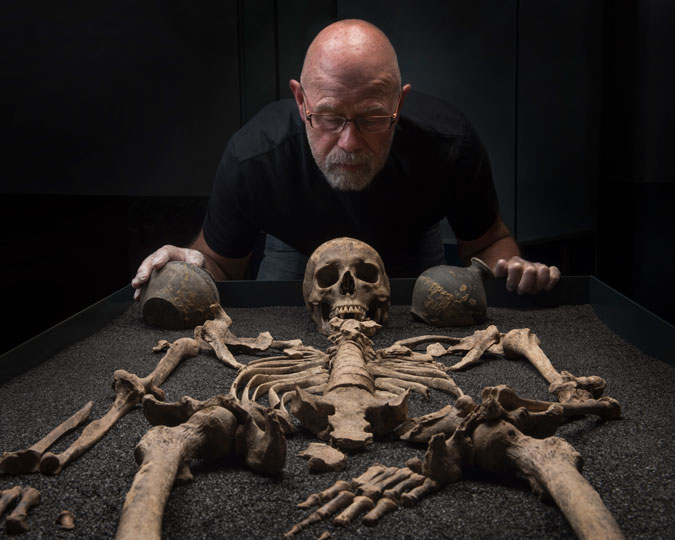Caroline Lawrence's historical mysteries explore the world of the Roman Empire, from grandeur to gore. We spoke to her about her love of London's Roman history, and the inspirations she found in the Museum of London's collections.
Caroline Lawrence is the best-selling author of children’s books set in the ancient world, including the Roman Mysteries and Roman Quests series, and now the forthcoming “Time Travel Diaries”.
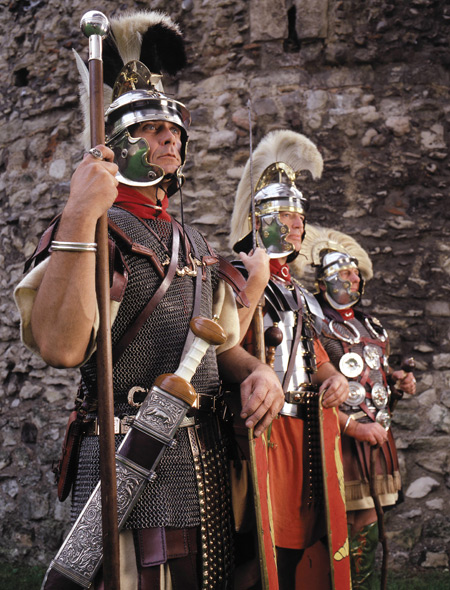
Guarding Londinium's walls
Actors dressed in the armour of Roman soldiers stand in front of London's old Roman wall
What period of Roman history are your books set in? What was the Roman world like at the time?
Caroline Lawrence: I studied Classics at university and I love getting into the heads of people who lived thousands of years ago. When you read Ancient Greek and Latin you can do just that!
Most of my books are set in the Mediterranean in the time of the Romans in the Imperial period (1st century AD) because I love everything about Italy and I think the Romans were utterly fascinating. The world of my girl detective, Flavia Gemina, was one you would definitely want to live in.
What was is that inspired you to write about Roman London why use it as the setting for books aimed at kids?
What inspired me to write about Roman London was the discovery of the grave of a 14-year-old Roman girl in South London. She was buried with fascinating grave goods including two expensive glass perfume bottles and an exotic clasp-knife with an ivory handle in the shape of a leopard.
The human remains and grave goods of this Roman Londoner are now in the Museum of London collection.
However, her bones tell us that she suffered from various types of malnutrition and had terrible teeth. Other analysis shows that although she had blue eyes and a European mother she grew up in the Southern Mediterranean, perhaps even North Africa! Somehow she then came to Roman London aged nine and sadly died five years later. I was fascinated! So I created a scenario where a London schoolboy is sent back to find out more about her, hence the time travel.
What changes when you shift the setting of a story to Londinium?
Unlike my Roman Mysteries series, set in sunny Italy, Roman London was NOT a place where you would want to live. The bones of Roman Londoners show all sorts of diseases and stress from overwork and bad diet. Also, Londinium (Roman London) would have been cold and damp. I am always so grateful to be living in an age of wonderful health and prosperity. I wanted to remind myself (and kids) how hard life would have been in Roman London, especially in the third century, when the girl with the blue eyes probably lived.
My time traveller, Alex, is quite witty and starts a list of 'Ways to Die in Londinium' some of which are surprising and unusual. At my interactive talk I will be asking kids to come up with possible causes of death and also showing modern and ancient objects and asking which would be most valuable to a Roman Londoner.
Roman London was clearly a dangerous place: do you try and tone it down or glide over the grisly bits when writing for children?
My first Time Travel Diaries book is not grisly at all, although we do see how hard life was for Londoners then. In fact, the book is actually quite exciting and also funny. For example, the first rule of time travel is ’Naked you Go and Naked you Must Return!’ That causes some amusing problems for Alex and… but wait! I don’t want to give away too much.
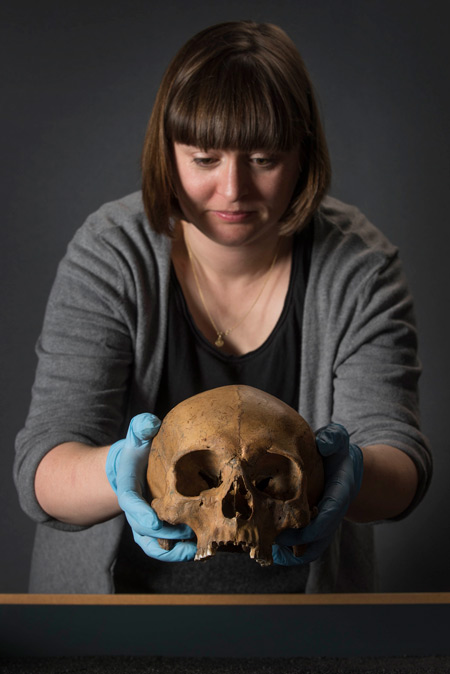
Dr. Rebecca Redfern, Museum of London osteologist
An osteologist studies the human remains (bones) of past Londoners to help us understand their lives
Caroline studied Classics at both the University of Berkeley in California and Cambridge University, and has won the Classical Association Prize for contributing to the public understanding of ancient history.
Clearly you’re an expert on Roman London. How historically accurate do you try and make your stories?
I try to make all the bits we know about as accurate as possible. I get the help of wonderful experts such as Dr Rebecca Redfern (Curator of Human Osteology at the Museum of London) who studied the bones of the blue-eyed girl and Dr Sophie Jackson (lead archaeologist at MOLA) who helped replace London’s Mithraeum on its original spot underneath Bloomberg’s new European headquarters.
The Mithraeum is important [in the book] because it is the site for the time portal. This has to be a space that existed in both our time and the past, accurate not only with regards to longitude and latitude but also altitude. Roman London is about 7 metres below the current street level!
What’s your favourite fact about Roman London?
That this wonderful city started out as a multinational, ethnically diverse market place where people bought and sold whatever they could think of… Just like today!








